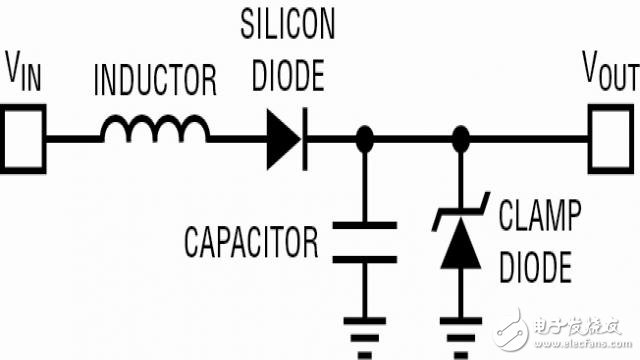This article focuses on the US Department of Defense's MIL-STD-1275, a standard that governs 28V DC power supplies in military vehicles. Similar national standards, such as DEFSTAN 61-5 Part 6 in the UK, also exist. In aviation, different standards apply—DO-160 for civil aircraft and MIL-STD-704 for military aircraft. Although the specific pulse characteristics may vary, the underlying principles remain similar, making them applicable to the same protection strategies.
One of the key challenges in power supply design is protecting against voltage surges, spikes, and ripples. Voltage spikes are short in duration, typically lasting only tens of microseconds, but can reach several hundred volts. These are often caused by inductive coupling from lightning strikes or sudden load changes. The current solution involves using transient voltage suppressors, combined with EMI filters and power cable inductance, which provides effective suppression.
Voltage surges, on the other hand, last longer—often tens to hundreds of milliseconds—and can reach up to 100V. They are commonly triggered by switching operations, such as when a load circuit or battery is disconnected. This causes a rapid rise in voltage across the alternator, which can affect other components sharing the same power source. Addressing this issue is more complex and requires careful design to ensure system stability.
Additionally, voltage ripple on the steady-state power rail introduces further design complexity. While moderate ripple can be filtered out by input capacitors, higher amplitude ripples and increased current levels may require a more efficient approach. In such cases, it's often better to allow the ripple to pass through the protection circuit to the downstream regulator, rather than trying to block it entirely.
Traditional passive overvoltage protection circuits (see Figure 1) rely on large, bulky components that introduce insertion loss. This can be problematic in modern systems with higher power demands. Moreover, diverting energy to ground doesn't guarantee stable power delivery downstream, and repeated operations may damage the passive components.

Figure 1: Passive overvoltage protection circuit
A more advanced solution is the use of a linear surge suppressor IC, such as the LT4363. This device offers improved performance, integrated overcurrent protection, and reduced board space requirements. As its name suggests, the LT4363 functions similarly to a linear regulator, providing precise control over the output voltage.

Figure 2: LT4363 Surge Suppressor with Current Limit
Under normal conditions, an external N-channel MOSFET is fully turned on, acting as a low-resistance switch between the input and output. If the output voltage exceeds the set threshold, the IC regulates the voltage on the OUT pin, ensuring continued operation during transient events.
An optional resistor between the SNS and OUT pins helps manage overcurrent situations. The current limit loop adjusts the gate voltage of the MOSFET to keep the sense voltage across the resistor at 50mV, preventing excessive current flow.
Whether an overvoltage or overcurrent event occurs, a current source charges the capacitor connected to the TMR pin. The charging rate depends on the difference between the input and output voltages. As the fault becomes more severe, the timer period shortens, helping to keep the MOSFET within its safe operating area and reducing the risk of thermal failure.
A substance that does not transimit electricity.
Line Post Insulator,Electrical Pole Insulator,Porcelain Insulators,Electrical Insulation Fiber Board
Jilin Nengxing Electrical Equipment Co. Ltd. , https://www.nengxingelectric.com